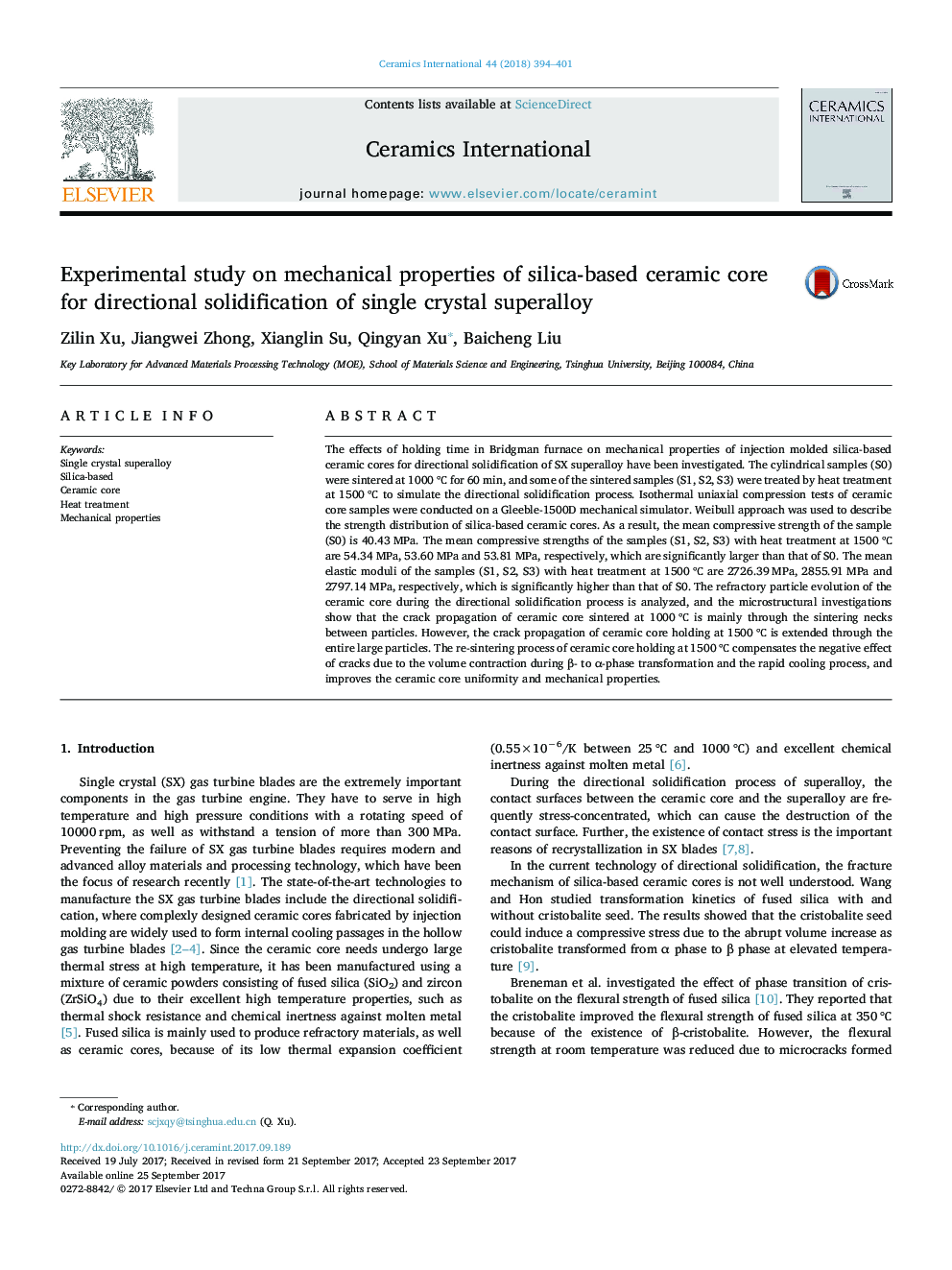| کد مقاله | کد نشریه | سال انتشار | مقاله انگلیسی | نسخه تمام متن |
|---|---|---|---|---|
| 7889037 | 1509797 | 2018 | 8 صفحه PDF | دانلود رایگان |
عنوان انگلیسی مقاله ISI
Experimental study on mechanical properties of silica-based ceramic core for directional solidification of single crystal superalloy
ترجمه فارسی عنوان
بررسی تجربی بر خواص مکانیکی هسته سرامیکی بر پایه سیلیکا جهت خنک کردن جهت سوپرآلیاژ تک کریستال
دانلود مقاله + سفارش ترجمه
دانلود مقاله ISI انگلیسی
رایگان برای ایرانیان
کلمات کلیدی
سوپرآلیاژ کریستال تک، بر اساس سیلیکا، هسته سرامیک، حرارت درمانی، ویژگی های مکانیکی،
موضوعات مرتبط
مهندسی و علوم پایه
مهندسی مواد
سرامیک و کامپوزیت
چکیده انگلیسی
The effects of holding time in Bridgman furnace on mechanical properties of injection molded silica-based ceramic cores for directional solidification of SX superalloy have been investigated. The cylindrical samples (S0) were sintered at 1000 â for 60 min, and some of the sintered samples (S1, S2, S3) were treated by heat treatment at 1500 â to simulate the directional solidification process. Isothermal uniaxial compression tests of ceramic core samples were conducted on a Gleeble-1500D mechanical simulator. Weibull approach was used to describe the strength distribution of silica-based ceramic cores. As a result, the mean compressive strength of the sample (S0) is 40.43 MPa. The mean compressive strengths of the samples (S1, S2, S3) with heat treatment at 1500 â are 54.34 MPa, 53.60 MPa and 53.81 MPa, respectively, which are significantly larger than that of S0. The mean elastic moduli of the samples (S1, S2, S3) with heat treatment at 1500 â are 2726.39 MPa, 2855.91 MPa and 2797.14 MPa, respectively, which is significantly higher than that of S0. The refractory particle evolution of the ceramic core during the directional solidification process is analyzed, and the microstructural investigations show that the crack propagation of ceramic core sintered at 1000 â is mainly through the sintering necks between particles. However, the crack propagation of ceramic core holding at 1500 â is extended through the entire large particles. The re-sintering process of ceramic core holding at 1500 â compensates the negative effect of cracks due to the volume contraction during β- to α-phase transformation and the rapid cooling process, and improves the ceramic core uniformity and mechanical properties.
ناشر
Database: Elsevier - ScienceDirect (ساینس دایرکت)
Journal: Ceramics International - Volume 44, Issue 1, January 2018, Pages 394-401
Journal: Ceramics International - Volume 44, Issue 1, January 2018, Pages 394-401
نویسندگان
Zilin Xu, Jiangwei Zhong, Xianglin Su, Qingyan Xu, Baicheng Liu,
